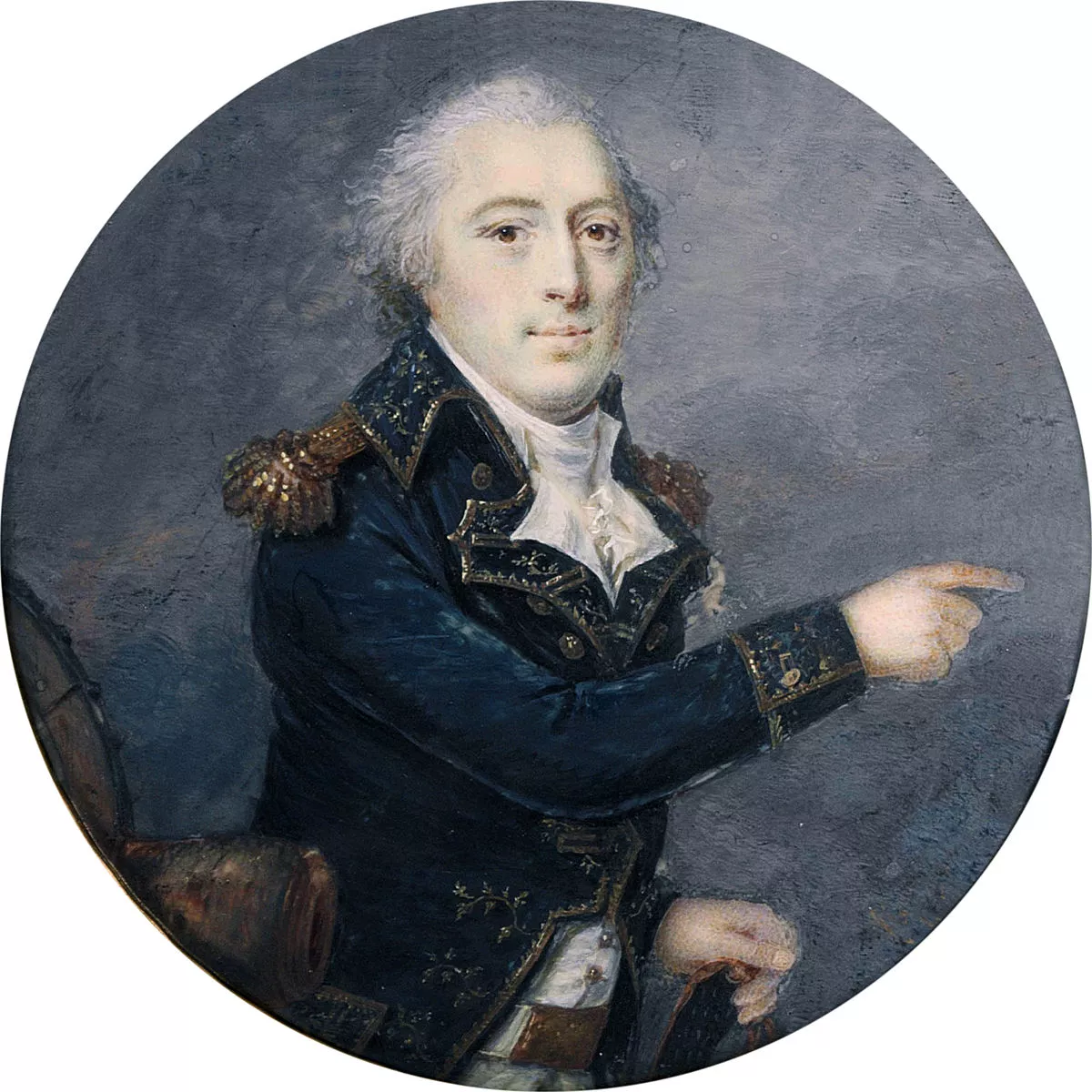 1.
1. Pierre Thouvenot fled from France during the revolution but returned under an amnesty and went on to serve in Napoleonic Wars.

 1.
1. Pierre Thouvenot fled from France during the revolution but returned under an amnesty and went on to serve in Napoleonic Wars.
Pierre Thouvenot did not join the military until 1779, having spent the previous five years as a geographical engineer.
Pierre Thouvenot served for a time on the Ile de Re where he became a Second-lieutenant in 1780 before being sent to Guadeloupe.
Pierre Thouvenot received a promotion to lieutenant in 1783 and continued to serve in the Caribbean following the Treaty of Paris.
Pierre Thouvenot was promoted to captain in 1788 and was made a Chevalier de Saint-Louis in 1791 and was appointed to the foundry at Indret, near Nantes, initially as an inspector but later as its director.
Towards the end of 1792, Pierre Thouvenot was promoted to lieutenant-colonel and was transferred, as director, to the foundry at Malines.
When, some two months later, a warrant for his arrest was issued by the new government in France, Pierre Thouvenot was prompted to flee Belgium.
Pierre Thouvenot was captured by Austrian soldiers and imprisoned at Treurenberg.
Pierre Thouvenot returned to France and the military; and with a promotion to colonel, was part of a force sent to Saint-Domingue to combat insurgency by the slaves there and served as Chief of staff to Generals Edme Etienne Borne Desfourneaux, Bertrand Clausel and Jean-Baptiste Salme successively.
In recognition of his actions, which included the liberation of Port-de-Paix from insurrectionists, Pierre Thouvenot was promoted again, on 15 October 1802, this time to general of brigade, and given command of the artillery of the Army of Santo Domingo.
On 10 April 1803 Pierre Thouvenot was made the army's chief of staff, but the actions and decadent lifestyle of his commanding officer, General Donatien-Marie-Joseph de Vimeur, vicomte de Rochambeau, so enraged Pierre Thouvenot and Clausel that they planned to have him removed.
Pierre Thouvenot returned to France a few months later having found passage via Cuba.
Pierre Thouvenot served as governor of Wurzburg in the then Electorate of Bavaria, before successively taking up the post at Erfurt in Prussia, and the towns of Stettin and Stralsund, both in Pomerania.
That is why Napoleon entrusted him with the government of a key province; on 18 January 1808, Pierre Thouvenot was sent to Guipuzcoa, Spain, the region through which most of the Imperial troops entered.
On 5 March 1808 Pierre Thouvenot occupied San Sebastian without encountering resistance.
Pierre Thouvenot always maintained strict discipline and imposed harsh punishments on the resistance, but he was never bloodthirsty or cruel.
Pierre Thouvenot's reports reveal an extremely realistic appreciation of the situation, but he never questions the war, the occupation or the chances of success of the occupation.
Pierre Thouvenot was the typical disciplined soldier who obeyed orders and nothing else.
When Joseph Bonaparte arrived in San Sebastian in June 1808, Pierre Thouvenot sent a report to Paris explaining without any hesitation the coldness of the reception and the hostility of the population.
On 18 July 1809, Pierre Thouvenot founded the first Masonic lodge in Spain, the Freres Unis.
Pierre Thouvenot was appointed governor and created an advisory council in each province, consisting of two owners, two merchants, an accountant and a treasurer.
The members had to be large owners or rich businessmen, be able to read and write and speak French, since Pierre Thouvenot humbly admitted that he did not speak Spanish.
Pierre Thouvenot was informed in detail about the situation in the country.
Pierre Thouvenot issued pardons, left all possible matters in the hands of local authorities and organized numerous parties in San Sebastian.
Pierre Thouvenot appointed official architects in each province to deal with public works such as bridges, roads, hydraulic works, etc.
The administrative work of Pierre Thouvenot was favored by his stability in the position, since he remained in the same until the end of the war, while other commands were replaced with excessive frequency.
Pierre Thouvenot's salary was high and he lived with great luxury at the expense of the Basques, but he never devoted himself to plundering the occupied territory for his own benefit.
In January 1811 Pierre Thouvenot moved his headquarters from San Sebastian to Vitoria, a more central position, better communicated with Burgos, Bilbao, Logrono, Pamplona and Bessieres' General Headquarters in Valladolid.
In Bilbao, the members of the municipality and the consulate of commerce were arrested by order of Pierre Thouvenot and taken prisoner to Vitoria, as hostages to force the town to pay the taxes.
Pierre Thouvenot showed great skill, cunning, cold blood in this campaign, fighting on many fronts at the same time with insufficient resources.
Pierre Thouvenot's actions were condemned by both sides as a needless waste of lives.
Pierre Thouvenot thought Thouvenot to be, "a well intentioned and gentlemanly individual" and suggested that perhaps the sortie had been forced upon him by his subordinates.
Pierre Thouvenot was sent back to Bayonne when Napoleon returned from exile in Elba but after defeat at Waterloo and the restoration of the monarchy, Pierre Thouvenot was labelled inactive and never served the French military again.
Pierre Thouvenot is one of the 660 names inscribed on the Arc de Triomphe in Paris.